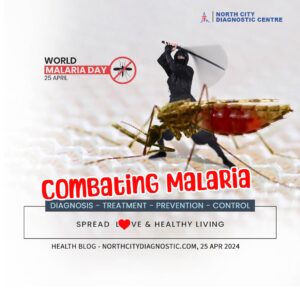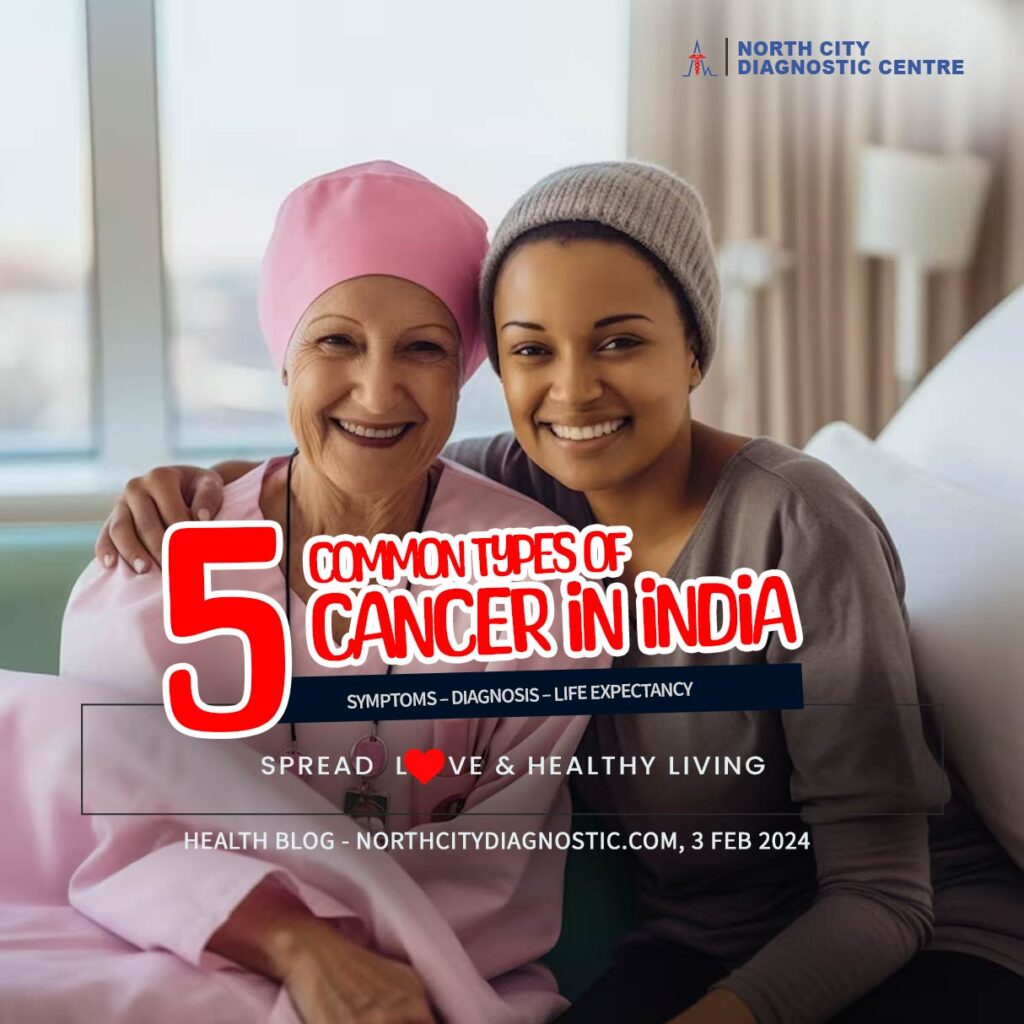
Menu
India is a country of diverse cultures and cancer comes as a daunting adversary. However, it is essential to approach this topic with optimism. In this article, we shed light on five common types of cancer in India – Breast, Cervical, Oral, Liver, and Lung – revealing their intricacies, from symptoms to diagnosis, while emphasizing the rays of hope that illuminate the path to survival.
Cancer, in all its forms, may seem like a foreboding presence, but with knowledge, early detection, and advances in medical science, people are increasingly overcoming these formidable foes. Join us as we navigate through the maze of information, unraveling the threads of hope woven into the fabric of cancer awareness. Let’s empower ourselves with insights into the symptoms, diagnostic methods, and life expectancy associated with these five prevalent cancers.
After all, in the face of adversity, knowledge is a powerful ally, and hope is a beacon that guides us towards brighter horizon.

“The Office for National Statistics, UK, cited that the survival rate for 1 and 5 years of patients with cancer is higher if detected at an early stage, emphasising the importance of early diagnosis. In India, the Cancer Survival Rate for 1 and 5 years is lower than that in Europe or North America.”
– The BJM
Uterine, colon and prostatic cancers are comparatively rare in India.
By taking care of our bodies and being mindful of our health, we can reduce our risk of developing these deadly diseases.
This is the most common form of cancer in India. While it is typically found among women of age 40 and above, it can strike any female, at any age and at any time
Modern medicine calls for mammography screening to be done on a regular basis once a woman has crossed the age of 40. All girls/women should definitely do self-breast examination regularly after the age of 20.
The USA has a 90–95% breast cancer survival rate, whereas India has a 66%.
The poor rate of survival from breast cancer in India may be attributed to several factors, including the following:
Age-standardized relative survival adjusts survival rates to a standard age distribution, providing a more accurate comparison across different demographic groups. It allows for a reliable assessment of how well people with a particular cancer are expected to survive in comparison to the general population, regardless of age differences.
Despite decreasing incidence rates, cervical cancer is the second most common female cancer in India, accounting for 10% of all female cancers. Like other forms of the disease, it is caused by the growth of abnormal cells in the cervix which is the lower part of the uterus that opens into the vagina. In many cases a complete cure is possible, but this possibility is present only if the disease is diagnosed at an early stage.
As per data published on Oct 13, 2023, in The Lancet Regional Health, the five-year age standardized relative survival (95% CI) of cervical cancer was 51.7% (50.2%–53.3%).
Five-year Observed Survival percentage as per Population Based Cancer Registries (PBCR) were,
India accounts for over 85% of the cases reported worldwide. Oral cancer is a major problem in the Indian subcontinent where it ranks among the top three types of cancer in the country. Age-adjusted rates of oral cancer in India is high, accounting for 20 patients per 100,000 population and accounts for over 30% of all cancers in the country.
Tobacco and alcohol consumption are the main causes of the development of this form of cancer. In the eastern part of India, it commonly occurs in the age group of 40-69 years, with 75.7% patients being male. Tobacco, alcohol and betel-quid being the top risk factors.
The survival rate and life expectancy also depend on the stage of diagnosis,
It’s important to note that these rates are general guidelines and don’t take into account other factors such as age, overall health, and type of treatment.
Liver cancer, is a prevalent form of cancer worldwide, particularly in countries with a high incidence of Hepatitis B infection like India. Apart from Hepatitis B, it can also be caused by other diseases that result in cirrhosis of the liver, such as Hepatitis C infection and alcohol abuse.
Based on the available data, the age-adjusted incidence rate of HCC, the most common type of liver cancer in India, is between 4 to 7.5 per 100,000 population per year for men, and 1.2 to 2.2 for women. The male-to-female ratio in India is 4:1.
The age of presentation for liver cancer in India varies from 40 to 70 years.
There are two types of liver cancer – primary and secondary. Primary liver cancer is a serious illness that starts in the liver, while secondary cancer spreads to the liver from other parts of the body.
Primary liver cancer can be classified into three types:
1. Hepatocellular carcinoma (HCC): This is the most common type of liver cancer and accounts for almost all cases.
2. Intrahepatic cancer (IHC): This is a type of bile duct cancer found in the liver. It represents about 10-20% of all primary liver cancer cases.
3. Angiosarcoma: This type of cancer is extremely rare, accounting for only 1% of primary liver cancer cases. It starts in the blood vessels of the liver lining and can also affect other organs.
There are four stages of liver cancer:
1. Very early stage: The tumour size is less than two centimetres, and the portal vein, one of the liver’s primary blood veins, is not under any more pressure. Bilirubin is present at normal levels. The tumour may have spread to other parts of the body, such as the lungs, lymph nodes, and bones.
2. Early stage: The tumour size is less than 5 cm, and liver function may vary. The portal vein may have increased pressure and normal bilirubin levels or elevated bilirubin levels.
3. Intermediate stage: There may be one or more tumours or one large tumour.
4. Advanced stage: The tumour has either spread to other parts of the body or entered the portal vein.
India is the second largest consumer and third largest producer of tobacco in the world. Approximately 28.6% of the Indian population uses tobacco products (42.4% men and 14.2% women), accounting for an estimated 267 million tobacco users in the country.
Source: Global Adult Tobacco Survey-2 [GATS]-2 2016–2017: India fact sheet; http://gatsatlas.org
As per reports published by Rajiv Gandhi Cancer Institute and Research Centre, in 17 April 2021, the five-year age standardized relative survival rates are,
Globocan estimates that the incidence of lung cancer in India is 70,275 for all genders and age groups, with an age-standardized incidence rate of 6.9 per 100,000 Indian citizens.
Notably, lung cancer is responsible for the highest number of cancer deaths globally.
While smoking is the primary risk factor for lung cancer, the disease may also develop in non-smokers.
The risk of lung cancer is directly proportional to the duration and frequency of cigarette smoking. Nevertheless, quitting smoking can significantly reduce the likelihood of developing lung cancer, even after prolonged exposure to tobacco smoke.
There are two types of lung cancers
Non-Small Cell Lung Cancer (NSCLC): NSCLC is the most common lung cancer type and includes adenocarcinoma, squamous cell carcinoma, and large cell carcinoma. Adenocarcinoma affects non-smokers and starts in the outer lungs, squamous cell carcinoma starts in the bronchial tubes, and large cell carcinoma is rare but aggressive.
Small Cell Lung Cancer (SCLC): Small cell lung cancer (SCLC) is a type of lung cancer characterized by rapid growth and early spread, often linked to heavy smoking. Carcinoid tumours, which are rare, grow slowly and are typically found in the bronchi of the lungs.
NSCLC (May happen to non-smokers)
SCLC (Linked to smoking)
As per reports published by The BJM, in 25 Jan 2019, standardized relative survival rates in India are,
At North City Diagnostic Center we offer personalized testing schedule that aligns with your medical history and risk factors. Consistent monitoring can be invaluable for early detection and effective management of arthritis. It’s not just about how often you test but making sure that the tests are aligned with your overall health profile for maximum benefit.
#cancer #breastcancerawareness #breastcancer #lungcancer #Oralcancer #livercancer #cervicalcancer #cancersurvivor #cancerawareness #cancerdemama #breastcancerawarenessmonth #cancerresearch #fightcancer #cancerfree #cancerfighter #cancerous #cancerwarrior #americancancersociety #standuptocancer #cancersupport # #curecancer #anticancer #NDC #HealthFirst #DiagnosticServices #NorthCityDiagnosticCentre #RoadmapToGoodHealth #Wellbeing #HealthandWellness
35-A ,Canal West Road
Near Gouri Bari Bus Stop
Kolkata – 700004.
Local: +91 33 6605 0888